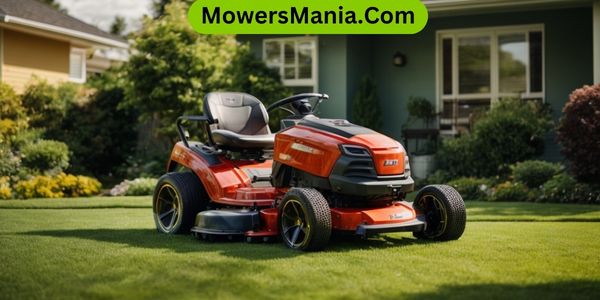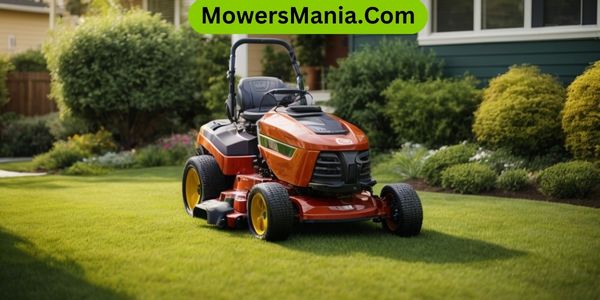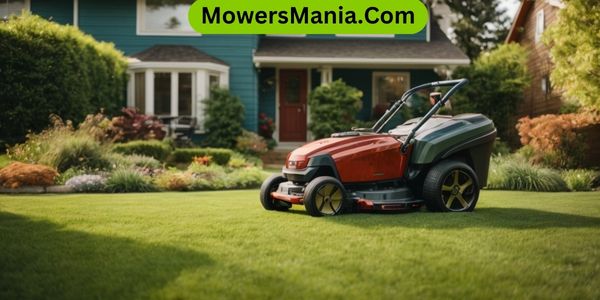Looking to invest in a self-propelled lawn mower? Wondering how much they cost? Well, you’re in luck! In this article, we’ll explore the various factors that affect the prices of self-propelled lawn mowers.
From different engine options to cutting width and additional features, we’ll break it all down for you.

So, sit back, relax, and find out just how much these handy machines might set you back.
Types of Self-Propelled Lawn Mowers
When shopping for self-propelled lawn mowers, you’ll come across a variety of different types to choose from.
With these different types to choose from, you can find a self-propelled lawn mower that suits your specific needs and preferences.
Factors That Affect Self-Propelled Lawn Mower Prices

To understand the pricing of self-propelled lawn mowers, let’s delve into the factors that affect their prices.
One of the main factors is the type and quality of the engine. Self-propelled lawn mowers can have either a gas-powered or electric engine. Gas-powered engines tend to be more expensive due to their higher power output and durability.
On the other hand, electric engines are typically less expensive but may not have the same level of power.
Another factor that affects the price is the cutting width and deck size. Self-propelled lawn mowers with wider cutting widths and larger deck sizes are generally more expensive because they can cover a larger area in less time.
Additionally, the brand and reputation of the manufacturer can impact the price. Well-known brands that have a reputation for producing high-quality lawn mowers often charge a premium for their products.
Furthermore, additional features such as variable speed control, mulching capabilities, and bagging options can also contribute to the overall price.
It’s important to consider these factors when purchasing a self-propelled lawn mower to ensure that you’re getting the best value for your money.
Comparing Different Engine Options for Self-Propelled Lawn Mowers

If you’re in the market for a self-propelled lawn mower, you may be wondering which engine option is right for you. When comparing different engine options for self-propelled lawn mowers, there are a few factors to consider.
The most common engine types are gas-powered, electric, and battery-powered.
Gas-powered engines are popular for their power and durability. They provide a consistent and reliable performance, making them suitable for larger lawns or tough terrain. However, they require regular maintenance, including oil changes and fuel refills.
Electric engines, on the other hand, are known for their convenience and ease of use. They’re quieter, emit no fumes or emissions, and require less maintenance compared to gas-powered engines. However, they may not have as much power as gas engines, making them more suitable for smaller lawns.
Battery-powered engines offer a balance between power and convenience. They’re typically quieter than gas engines and don’t require fuel or oil changes.
However, they do have limited battery life, so they may not be suitable for larger lawns that require longer mowing times.
Ultimately, the engine option that’s right for you will depend on your specific needs and preferences. Consider the size of your lawn, the terrain you’ll be mowing on, and the level of maintenance you’re willing to undertake.
By carefully considering these factors, you can choose the engine option that will best meet your needs and provide a pleasant mowing experience.
The Impact of Cutting Width on Self-Propelled Lawn Mower Costs
Considering the impact of cutting width on self-propelled lawn mower costs, it’s important to understand how this feature can affect the price you pay. The cutting width refers to the size of the area that the mower can cover in one pass.
Generally, self-propelled lawn mowers with wider cutting widths tend to be more expensive. This is because a wider cutting width allows the mower to cover a larger area in less time, resulting in increased efficiency and productivity.
When comparing self-propelled lawn mowers with different cutting widths, you’ll notice that the cost increases as the cutting width increases.
This is because larger cutting widths require more powerful engines and more durable cutting decks to handle the increased workload. These additional features contribute to the higher price tag.
However, it’s important to consider your specific needs and the size of your lawn before deciding on a cutting width. If you have a small to medium-sized lawn, a mower with a narrower cutting width may be more suitable and cost-effective.
On the other hand, if you have a larger lawn or want to minimize mowing time, investing in a mower with a wider cutting width may be worth the higher cost.
Additional Features and Accessories for Self-Propelled Lawn Mowers

When shopping for self-propelled lawn mowers, you may frequently encounter a range of additional features and accessories to enhance your mowing experience. These features and accessories can vary depending on the brand and model of the mower, as well as your specific needs and preferences.
One common feature is the adjustable cutting height, which allows you to easily change the height at which the grass is cut. This is particularly useful if you have different types of grass or if you prefer a specific grass length.
Another feature to consider is the mulching capability, which allows the mower to finely chop the grass clippings and distribute them back onto the lawn as natural fertilizer. This can help improve the health and appearance of your lawn.
Some self-propelled lawn mowers also come with a bagger attachment, which collects the grass clippings for easy disposal or composting. Additionally, you may find mowers with side discharge or rear discharge options, which give you more flexibility in how the grass clippings are distributed.
Other accessories that you may come across include headlights for mowing in low-light conditions, ergonomic handles for added comfort, and even Bluetooth connectivity for controlling the mower with your smartphone.
Ultimately, the choice of additional features and accessories will depend on your personal preferences and the specific needs of your lawn.
Frequently Asked Questions [FAQs]
How Often Should I Sharpen the Blades on My Self-Propelled Lawn Mower?
You should sharpen the blades on your self-propelled lawn mower every 20–25 hours of use. This ensures optimal cutting performance and prevents damage to your lawn. Regular maintenance will keep your mower in top shape.
Are Self-Propelled Lawn Mowers Suitable for Hilly Terrains?
Self-propelled lawn mowers are suitable for hilly terrains because they have powerful engines that can handle the inclines. They make mowing easier for you as they propel themselves forward, allowing you to focus on steering.
Can I Use a Self-Propelled Lawn Mower to Mulch Grass Clippings?
Yes, you can use a self-propelled lawn mower to mulch grass clippings. It has a mulching feature that cuts the grass into fine pieces, which helps nourish your lawn.
What Is the Average Lifespan of a Self-Propelled Lawn Mower?
On average, the lifespan of a self-propelled lawn mower is around 8–10 years. Regular maintenance and proper care can help extend its life. Consider factors like usage, storage, and quality when making a purchase.
Are Self-Propelled Lawn Mowers Difficult to Maintain and Repair?
Maintaining and repairing self-propelled lawn mowers can be challenging. Regular maintenance like cleaning, oiling, and sharpening blades is necessary. If a problem arises, you might need to troubleshoot or seek professional help.
Conclusion
So, if you’re in the market for a self-propelled lawn mower, it’s important to consider the different types available, as well as the factors that can affect their prices.
Comparing engine options and cutting widths will also play a role in determining the cost.
Additionally, don’t forget to think about any additional features or accessories you may want.
By taking all of these factors into account, you’ll be able to find the perfect self-propelled lawn mower for your needs and budget.



